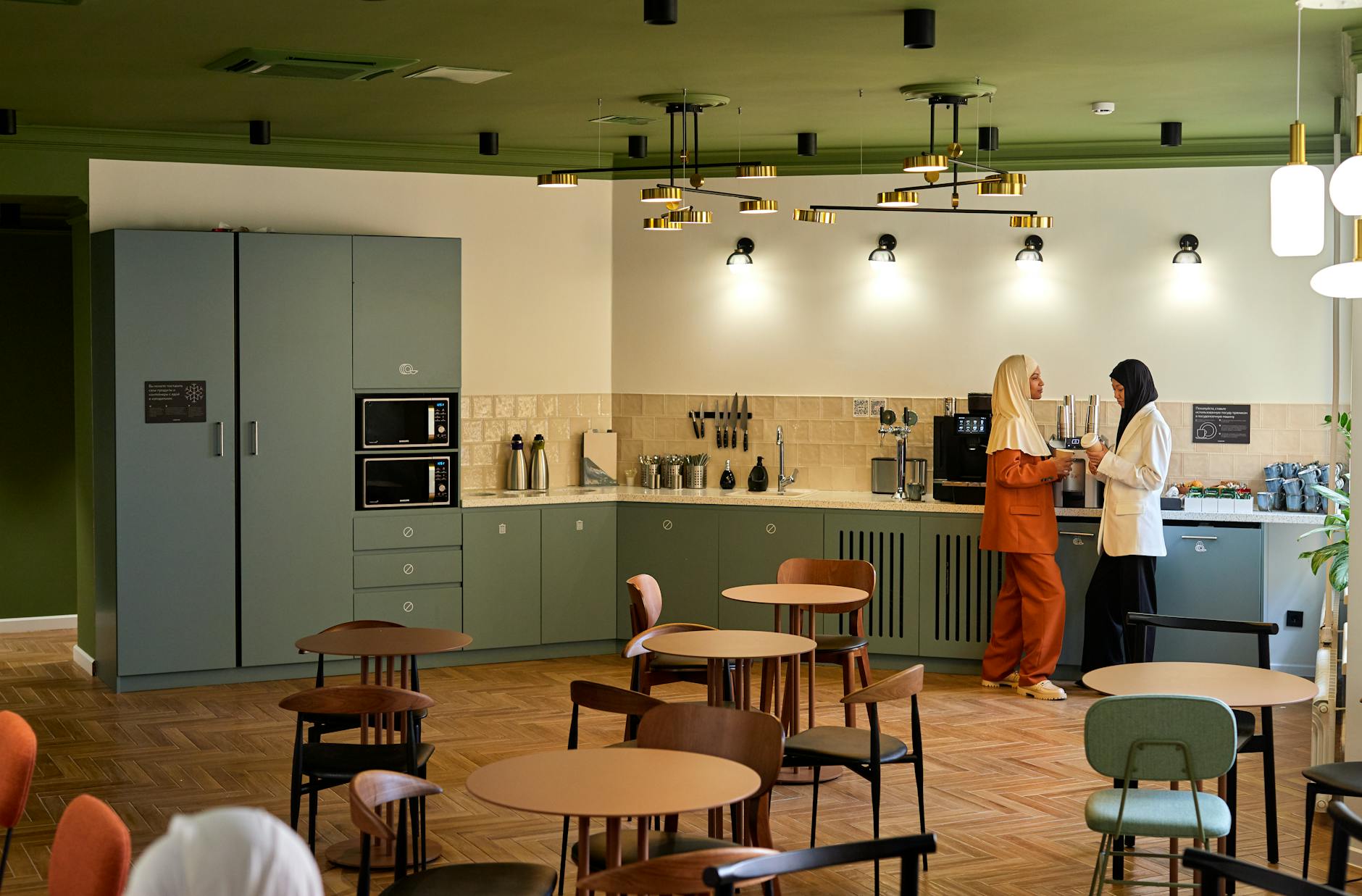
How We Maintain Government Facilities: A Walkthrough
See how government facility cleaning works—security, onboarding, QA, green cleaning, and communication—step by step.

A clean breakroom protects staff from foodborne illness, reduces odors and pests, and keeps shared appliances working longer. Use the policy, checklists, and signage below to keep your shared kitchen consistently clean.
Employees: Wipe up spills, clean shared surfaces you touched, label and remove your food by reset day, and follow handwashing.
Facilities/Janitorial (Nexus or in-house): Daily cleaning with targeted disinfection, trash, floors, weekly fridge wipe-downs, monthly deep cleans, supply restock.
No. Cleaning with soap/detergent removes most germs. Disinfect high-touch areas during heavy use, when someone is sick, or where higher risk exists. Always clean first so disinfectants can work.
Use EPA-registered products suitable for hard, non-porous surfaces and follow label contact times. Avoid porous materials unless the product specifically has claims for them.
Refrigerate perishable foods within 2 hours (1 hour if > 90°F/32°C), and keep the fridge at or below 40°F.

See how government facility cleaning works—security, onboarding, QA, green cleaning, and communication—step by step.

Understand the difference between vehicle detailing and facility janitorial for dealerships—who does what, where, and when—plus how to coordinate both.

Use this practical, copy-ready schedule to keep workspaces healthy, presentable, and low-maintenance. Align daily touch-ups with weekly resets and monthly deep care to prevent build-up, protect flooring, and reduce complaints.

When facility operations run smoothly, your team can focus on what matters most. The right janitorial partner doesn’t just “clean the building”—they protect your brand, occupant health, and long-term asset value through responsive, service-first partnerships.